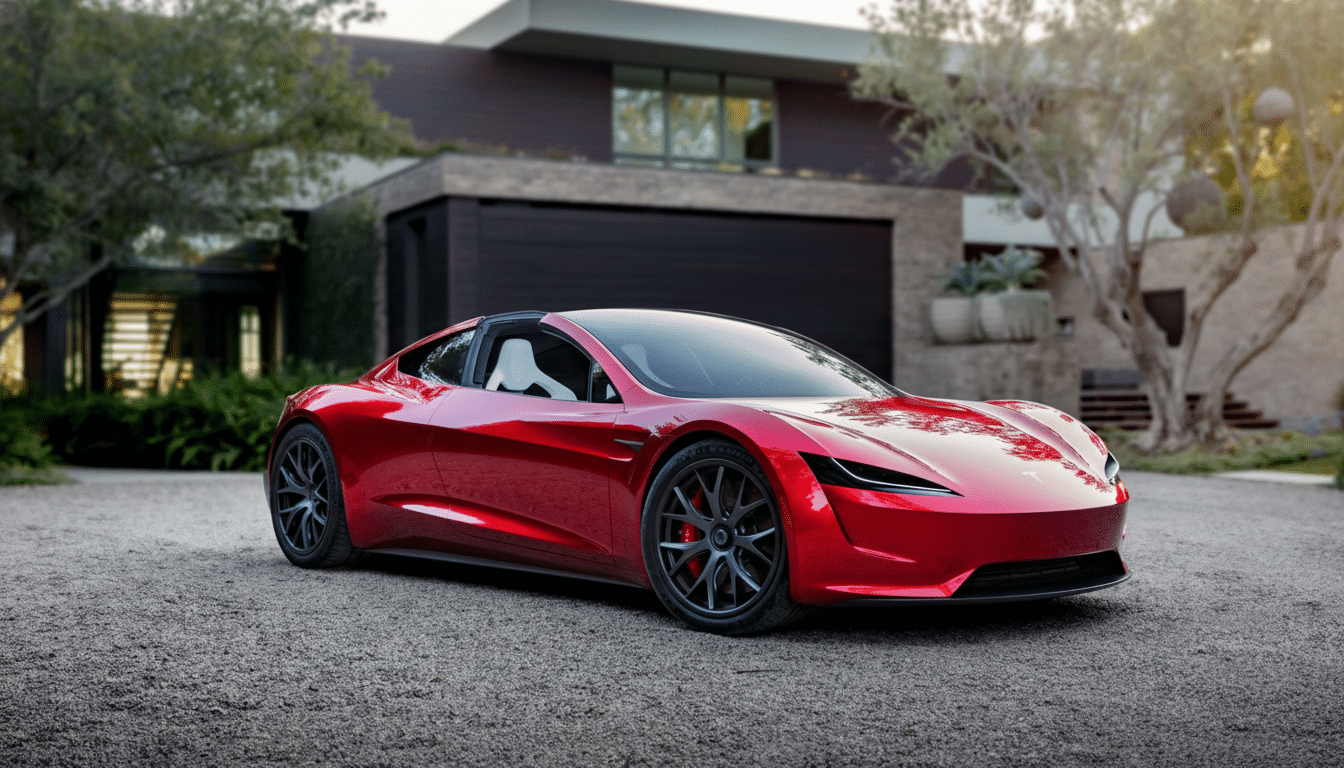Tesla is jokingly setting up the (too) long-awaited next‑generation Roadster reveal for April Fools’ Day, and Elon Musk sees the timing as a fun yet ambitious setup to his latest “best work” — or what he has previously defined as their biggest demo ever.
The showcase will now be ahead of production by about 12–18 months in a schedule that has already been drawn out for the halo sports car.

What the Delay Signals About Tesla’s Roadster Strategy
For Tesla watchers, the move falls within a familiar pattern: grand targets and public recalibration with a promise that the payoff in the final act will somehow justify the long wait. The Roadster isn’t an up-sell purpose-built to goose sales numbers; it’s a brand aesthetic. Scheduling the unveil this early on April Fools’ Day all but ensures free media, with Tesla free to then go and craft the show as it pleases, setting expectations all along.
Strategically, the Roadster’s timing implies Tesla is prioritising programmes of scale and autonomy while saving a high‑gloss project in the wings to excite fans and investors. The company played from the same playbook for other headline‑making launches, whose reveal set a multiyear narrative arc long before customers took delivery.
A Halo Car and Over-the-Top Expectations for Roadster
Myths have evolved around the second‑gen Roadster since its prototype first appeared years ago. Early materials advertised eye‑watering numbers such as a claimed 0–60 mph time of approximately 2.1 seconds, an optional “SpaceX package” with cold‑gas thrusters and battery capacity teased at around the 200 kWh mark, all with range targets surpassing 600 miles. Lately, Musk has been hinting at sub‑1‑second 0–60 mph sprint times — figures that would place in new terms what a road‑legal car can do.
Physics sets a high bar. Accelerating to 60 mph in less than one second requires average acceleration greater than 2.7 g, which is typically more than pure mechanical grip can accomplish on street tires, so auxiliary thrust becomes interesting: You can add force without an associated contact patch of rubber. Even then, packaging, thermal limits, and repeating it means more than one record shot. Between an exciting one‑off and a production‑ready system lies an engineering gauntlet.
There’s also the customer reality. Early adopters, eager to get their hands on the wheel of a revolutionary new vehicle, put down deposits — some reportedly as high as $50,000 simply for reservations — for a car that has changed conceptually since they bought in even as its actual delivery date continued to slide. The payoff has to be more than a stunt; it needs there to be some credible path to making this into a buildable, serviceable, warrantable product.
Engineering and Regulatory Hurdles Facing the Roadster
A thruster‑ejected Roadster would be uncharted territory for regulators and insurers. High‑pressure composite tanks, valves, and nozzles add weight and complexity, and they have to meet crash standards directed by agencies like NHTSA. Passenger safety during high‑g launches — think fastening details, seat ergonomics, and neck loads — will come under the microscope. If any aspect actually raises the vehicle significantly or acts like a jet assist, questions might have to go another mile up in the air — to the FAA. None of that is insurmountable, but it requires time, disciplined testing, and documentation.

That will be the lens of repeatable performance. SAE performance protocols and independent instrumented testing have a way of separating hype from hardware. If Tesla shows that it has cars that can consistently run, with thermal and systems pressures within acceptable limits, then this will be a significant step beyond showmanship.
Investor and Customer Takeaways from the Roadster Delay
For investors, the delay is a reminder that Roadster serves as a brand amplifier rather than a source of financial weight. For years, analysts at firms like Morgan Stanley have framed it as halo marketing that bolsters Tesla’s broader technology narrative — performance, software, and energy storage — but whose core profitability relies on mass‑market models and progress toward autonomy.
For reservation holders, the most relevant update is the timeline: You’ll see a theatrical unveil on April Fools’ Day, then production ramping up one or 1½ years later.
That gap reflects Tesla’s history of difficult launches, and what it points to is where the company will be deploying its manufacturing muscle. The downside is patience fatigue; the upside is a flagship that, if it fulfills even half its promises, will help rewrite the ceiling of EV performance.
What to Watch for at the Roadster Unveil and Demo
All eyes will be on whether Tesla demonstrates a drivable prototype conducting repeatable demonstrations to independent timing.
- What the propulsion stack will be (motor layout, battery architecture, charging rates)
- Details on any thruster option, curb weight, and tire specification
- How Tesla envisages homologating a system that operates beyond traction as we know it
Indications of site and supplier readiness would provide some credibility to the 12–18‑month production window.
Tesla has built a business on turning skepticism into buzz and buzz into orders. Setting the prank on April Fools’ Day sets a high bar: The spectacle has to have engineering that scales. And if the Roadster crosses that bar, it will be more than just a punchline — it will be a proof point.

